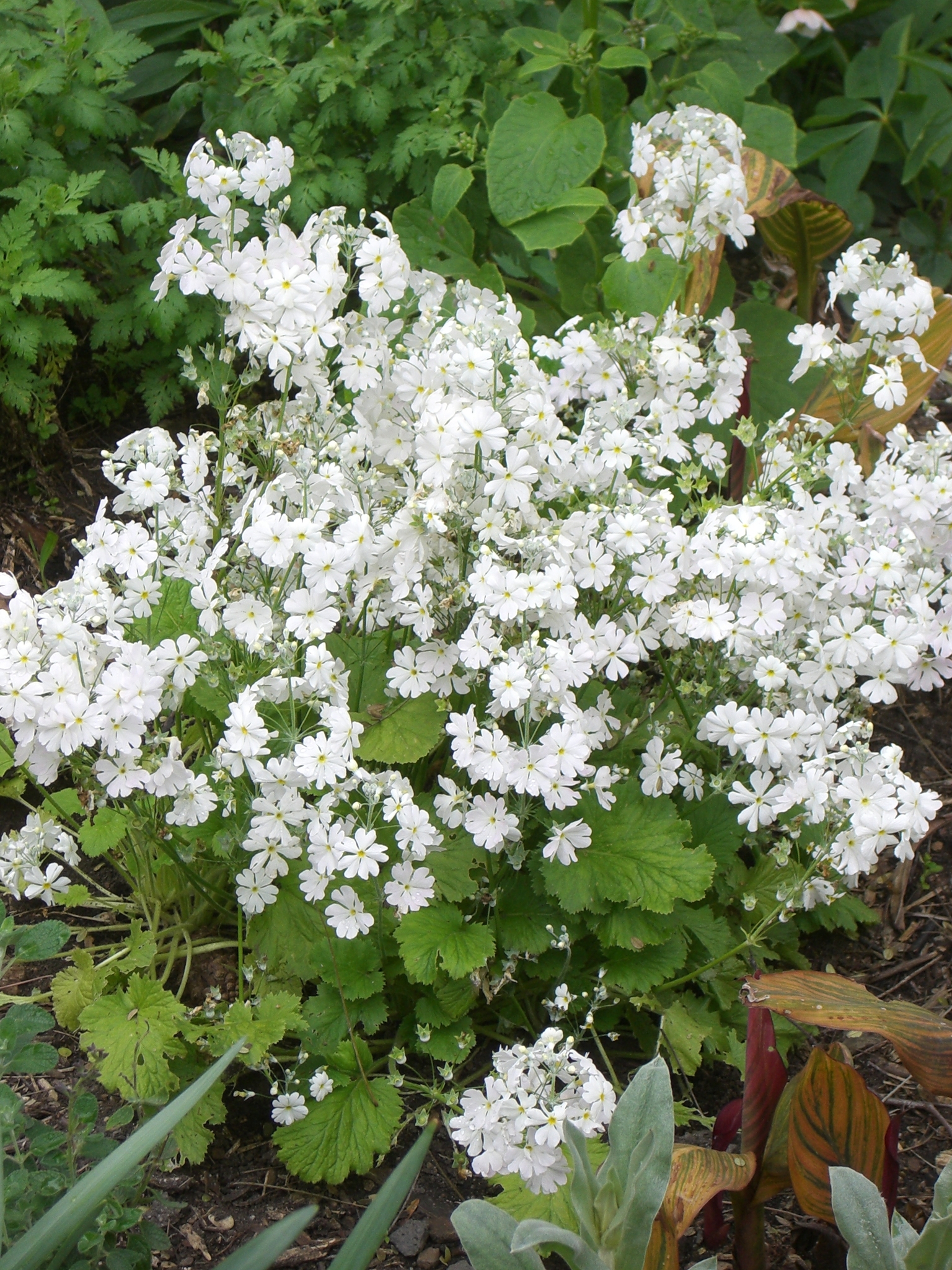
Latin primus-first. From Primula veris (translated to 'firstling of spring').
Mostly stalked perennial herbs with short rhizomes; often with a waxy powder on some or all parts. Leaves mostly in a basal rosette, entire, toothed or lobed. Flowers in terminal clusters, sometimes whorled, often fragrant, the 5 petal lobes generally notched; flower tube longer than the 5-lobed calyx. Stamens 5. Fruit a 5 or 10-valved capsule.
This is an important horticultural genus in the temperate northern hemisphere where several species are grown by specialist collectors for their range of interesting cultivars; these include long-cultivated and popular horticultural groups such as auriculas (known perhaps most widely to florists), the large-flowered hybrid bedding polyanthus and primroses. However, the generally cool climatic demands of the genus make Australia unsuitable for the cultivation of most species, except in cooler areas. The European and American species generally tolerate a little sun but the Asiatics require moisture and cool shade.
Specialist growers provide a range of species but only the most common are described here. Plants known in Australia under the general common name Polyanthus comprise several cultivar groups probably including P. ×variabilis (P. veris × P. variabilis), P. Pruhonicensis hybrids (hybrids involving P. juliae) and P. Petiolares hybrids (unspecified hybrids). They are used in Australia for bedding but much less frequently than in the northern hemisphere. In view of the taxonomic complexity these plants have all been treated here under the general category P. ×polyantha
Seed, division and cuttings, depending on the group. Recently micropropagation has been used overseas.
Flower tube longer than sepals.
Jack-in-the-Green Primula Nursery, Woodend, Victoria.
About 430 species mostly temperate northern hemisphere, often alpine, but extending into the montane tropics of S America, Java and New Guinea.
Green (1976), Smith et al. (1977), Fenderson (1986, most recent taxonomic treatment), Hyatt (1989), Halda (1992), Richards (1986, 1993), Shaw (1991), Baker & Ward (1995). Journal: Primroses, a quarterly journal of the American Primrose, Primula and Auricula Society, 9705 SW Spring Crest Dr., Portland, Oregon 97225.
Key to be used as a guide to common species only. Several hybrid groups and cultivars will not key out correctly and many other species are available from time to time.
Source: (1997). Primula. In: . Horticultural Flora of South-eastern Australia. Volume 2. Flowering plants. Dicotyledons. Part 1. The identification of garden and cultivated plants. University of New South Wales Press.
